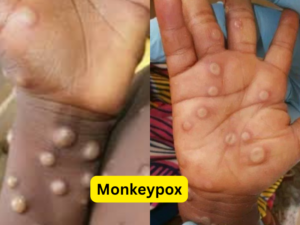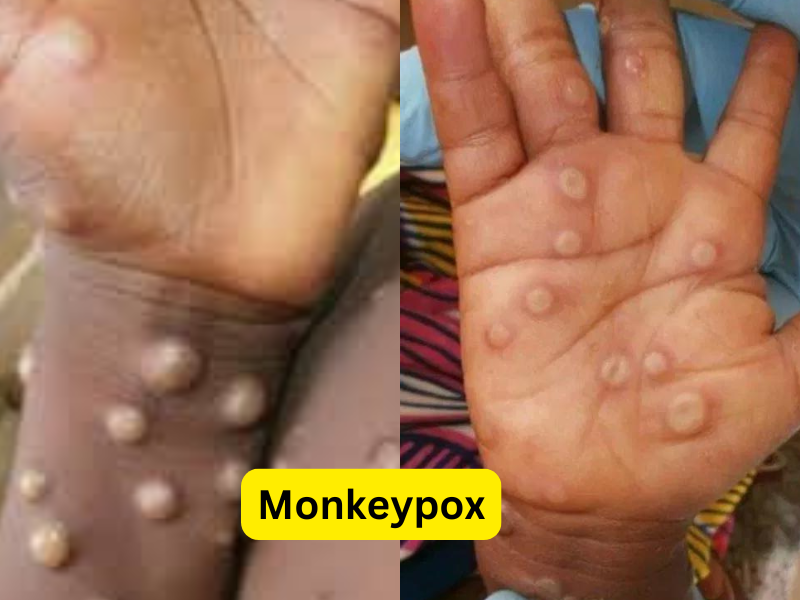Comprehensive Guide to Monkeypox: Symptoms, Treatment, and Vaccine Information
Monkeypox, a viral infection from the same family as smallpox, has become a growing health concern worldwide. With the rise in monkeypox cases and its spread beyond historically affected regions, understanding the monkeypox symptoms, available monkeypox treatment, and the significance of the monkeypox vaccine is crucial for public awareness. This article will cover key details and address the current situation, including monkeypox cases in India.

Monkeypox Symptoms
Monkeypox symptoms are similar to but milder than smallpox symptoms. They typically appear 6 to 13 days after exposure to the virus but can take as long as three weeks to manifest. The disease usually lasts for 2 to 4 weeks, with symptoms including:
- Fever
- Headache
- Muscle aches
- Back pain
- Swollen lymph nodes
- Chills
- Fatigue
A key distinguishing symptom of monkeypox is the rash that often begins on the face before spreading to other parts of the body. This rash evolves from flat lesions to fluid-filled blisters, which eventually crust over and fall off. The rash can be quite dramatic, as seen in many monkeypox rash pictures circulating online, showing the progression of the infection from its early stages to recovery.
The swollen lymph nodes are another notable feature of monkeypox, helping to differentiate it from other diseases like chickenpox or measles.
also read: Understanding Monkeypox : Global Impact and Key Information
Monkeypox Treatment
There is no specific monkeypox treatment available at present, but most cases are mild and resolve on their own. Supportive care is the primary treatment approach, including:
- Hydration
- Pain relief for body aches and rash discomfort
- Fever control
- Antiviral medications (in severe cases)
For individuals with severe symptoms or weakened immune systems, antiviral drugs like Tecovirimat (TPOXX), which was developed for smallpox, may be prescribed. This medication can help reduce the severity and duration of the illness.
It’s important to isolate individuals with monkeypox to prevent further spread, especially as the virus can be transmitted through direct contact with bodily fluids or contaminated surfaces.
Monkeypox Vaccine
The monkeypox vaccine is a crucial tool in controlling outbreaks. Since monkeypox is closely related to smallpox, the smallpox vaccine has proven effective in preventing monkeypox or reducing the severity of the disease. The Jynneos vaccine (also known as Imvamune or Imvanex), which was developed for smallpox, has been widely used to combat monkeypox outbreaks, particularly in countries with rising cases.
Health authorities recommend the vaccine for:
- Healthcare workers exposed to monkeypox patients
- Close contacts of infected individuals
- People at high risk of exposure due to specific circumstances, such as laboratory workers handling the virus
Vaccination can be given as post-exposure prophylaxis (PEP) to people who have been exposed to the virus, reducing the chances of developing severe symptoms.
Monkeypox Rash Pictures
The monkeypox rash is one of the most identifiable symptoms of the disease. It begins as small, flat lesions that develop into raised bumps, which later fill with fluid or pus. Over time, these lesions scab over and heal.
Monkeypox rash pictures have been widely circulated to raise awareness about the visual presentation of the disease, helping people identify early symptoms. The rash is often more pronounced on the face, hands, and feet, although it can spread to other parts of the body.
Monkeypox Cases
The monkeypox outbreak has resulted in more than 88,000 confirmed cases globally, with the most significant numbers in North America and Europe. As of 2023, the United States has recorded the highest number of cases, followed by several European nations. Despite efforts to control the spread, cases continue to be reported in non-endemic countries.
Monkeypox Cases in India
Monkeypox cases in India have been rising steadily, with the first confirmed case reported in July 2022. Since then, Indian health authorities have ramped up testing and monitoring efforts to control the spread of the virus. Most cases in India have been traced to individuals who traveled from affected regions, but community transmission has also been documented.
The government of India has taken steps to raise awareness about monkeypox symptoms, prevention methods, and the importance of early detection. Vaccination campaigns are also being considered to protect healthcare workers and at-risk populations.
Understanding monkeypox symptoms, treatment, and the role of the monkeypox vaccine is vital for controlling the spread of this viral disease. With cases still emerging globally, including rising monkeypox cases in India, public awareness and proactive healthcare measures remain key to managing future outbreaks.





